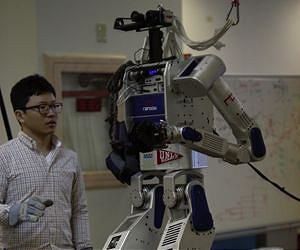23 July 2015 by Africom - defenceWeb
Recently, the Democratic Republic of Congo National Logistics School graduated its fourth class since 1983. U.S. Army Africa and several international organizations were involved in the curriculum and instruction at the school in Kinshasa, DRC.
More than 600 graduates from all corners of the DRC and branches of the military including Ministry of Defense and Ministry of Interior security forces participated in the six-month program.
The DRC Logistics School Initiative started with a shared vision between the leadership of the DRC, U.S. Department of State and the European Union. The combined effort for this program began in November 2014.
According to Don Brown, a senior U.S. Army contractor, the DRC, U.S. State Department, EU partner nations, U.S. Army Training and Doctrine Command and USARAF teams worked to design an institution that would form the foundation for a new generation of DRC logistical leaders and increase the DRC’s land forces readiness posture.
The DRC identified and consolidated talented individuals from all branches of the military to support the pilot program. EU participants contributed to the infrastructure, providing the facilities, building and furniture. The U.S. Department of State and its contracting representative, the Crisis Response Company, worked with the commandant and cadre of the logistics school to develop course curriculum.
USARAF’s Directorate of Logistics acted as the lead integrator, providing overall concept, planning, coordination, oversight and subject matter expertise focusing on designing a sustainable institution. Support for the school came from several organizations including the Army Logistics University, AFRICOM’s Regionally Aligned Force, 3rd Brigade 1st Armored Division, Fort Bliss, Texas. The RAF provided a six-person Institutional Logistics Assistance Team known as an ILAT.
The ILAT worked with the DRC National Logistics School to assist cadre, instructors and the commandant with every facet of the school’s development, management and execution. Maj. Carlos Morales, officer in charge of the ILAT, worked directly with the commandant of the logistics school to refine curriculum and develop the DRC’s version of a Senior Sustainment Leaders’ course.
Sgt. 1st Class Antonio Flores provided noncommissioned officer guidance at the tactical level with the school’s cadre and students. ILAT members also assisted DRC cadre by providing subject matter experts in food service, transportation, ammunition, maintenance, armament repair, fuel supply operations and supply management. Flores stressed the ‘train as you fight’ approach to training, constantly reminding Congolese soldiers “What you learn here are the foundations of your skills. Learn it, remember it and master it.”
Congolese cadre provided instruction through classroom lectures, hands-on and practical exercises dedicated to expanding students’ abilities to conduct various sustainment operations in austere environments. The ILAT also assisted with the refinement of course instruction, teaching techniques and developing enduring academic institutional policies.
After six months of intensive classroom and hands-on training, students held a graduation ceremony attended by representatives of the DRC’s National Congress and director of military operations, USARAF, the U.S. Department of State, EU and numerous senior military leaders. The event culminated with 612 graduates conducting a pass in review.
The DRC intends to conduct two iterations of the logistics school per year for the next several years in order to build continuity within its forces. The next iteration of the logistics school will start this month, with DRC cadre, U.S. Department of State, international partners and the USARAF ILAT continuing their collective efforts to develop a sustainable and enduring logistics institution.
commenter cet article …













